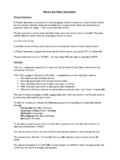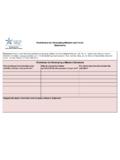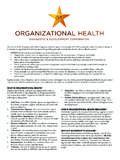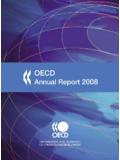Transcription of SPECIAL REPORT DPRK FINAL (3) - Food and …
1 S P E C I A L R E P O R T FAO/WFP CROP AND food security assessment mission TO THE DEMOCRATIC PEOPLE S REPUBLIC OF KOREA 28 November 2013 food AND AGRICULTURE ORGANIZATION OF THE UNITED NATIONS, ROME WORLD food PROGRAMME, ROME - 2 - This REPORT has been prepared by Kisan Gunjal and Swithun Goodbody (FAO) and Siemon Hollema, Katrien Ghoos, Samir Wanmali, Krishna Krishnamurthy and Emily Turano (WFP) under the responsibility of the FAO and WFP Secretariats with information from official and other sources. The authors wish to acknowledge valuable contributions from Belay Gaga and Bui Bong (FAO) and Anna-Leena Rasanen, Xuerong Liu, Dawa Gyetse and Jennifer Rosenzweig (WFP).
2 Since conditions may change rapidly, please contact the undersigned for further information if required. Liliana Balbi Kenro Oshidari Senior Economist, GIEWS, FAO Regional Director, WFP Fax: 0039-06-5705-4495 Fax: 0066-26554413 E-mail: E-mail: Please note that this SPECIAL REPORT is also available on the Internet as part of the FAO World Wide Web ( ) at the following URL address: The SPECIAL Alerts/Reports can also be received automatically by E-mail as soon as they are published, by subscribing to the GIEWS/Alerts REPORT ListServ. To do so, please send an E-mail to the FAO-Mail-Server at the following address: leaving the subject blank, with the following message: subscribe GIEWSA lertsWorld-L To be deleted from the list, send the message: unsubscribe GIEWSA lertsWorld-L Please note that it is now possible to subscribe to regional lists to only receive SPECIAL Reports/Alerts by region: Africa, Asia, Europe or Latin America (GIEWSA lertsAfrica-L, GIEWSA lertsAsia-L, GIEWSA lertsEurope-L and GIEWSA lertsLA-L).
3 These lists can be subscribed to in the same way as the worldwide list. - 3 - TABLE OF CONTENTS Page mission Highlights .. 4 1. OVERVIEW .. 4 mission organization .. 4 food production .. 6 Household food security and nutrition .. 7 2. OVERALL ECONOMIC SETTING AND AGRICULTURE IN DPRK .. 7 Macro-economy .. 7 food imports .. 8 Economic policy changes .. 9 Agricultural sector .. 10 3. food CROP PRODUCTION IN 2013 .. 11 Climate .. 11 Area planted .. 13 Means of production and inputs .. 16 Crop yields and production .. 20 Livestock .. 24 4. food SUPPLY/DEMAND BALANCE 2013/14 .. 25 5. HOUSEHOLD food security AND VULNERABILITY ANALYSIS.
4 27 Household food consumption .. 27 The Public Distribution System .. 29 Household food security and coping strategies .. 34 6. MATERNAL, INFANT AND YOUNG CHILD NUTRITION .. 37 Trend in under-nutrition .. 37 Severe and moderate acute malnutrition .. 39 Child feeding practices .. 39 Morbidity .. 42 Water, sanitation and hygiene practices .. 42 7. RECOMMENDATIONS FOR FOLLOW-UP ACTIONS .. 44 Recommendations related to agriculture .. 44 Recommendations related to household food security and nutrition .. 45 - 4 - mission Highlights 1. In the DPRK, despite a small reduction in planted area, overall crop production in 2013/14 is estimated to increase by about 5 percent.
5 2. A total of million tonnes of food output (including paddy, cereals, soybeans, and cereal equivalent of potatoes) from cooperative farms, plots on sloping land, and household gardens for 2013/14 is expected. This estimate includes the 2013 main season harvest that was concluded and the forecast for 2014 early season crops. When paddy is converted to milled rice and soybeans to cereal equivalent, total food production is estimated at about million tonnes. 3. Unusually early and heavy rains in July and early August compromised maize and soybean yields but had little effect on paddy. 4. Soybean production recorded a second consecutive year of decline, due to a 6 percent reduction in yield.
6 Main-season potatoes performed well this year, which bodes well for the seed supply for the 2014 early crop. However, supply of seeds for minor winter and spring wheat as well as barley is a constraint due to declining production over consecutive recent years. 5. Based on the mission s estimate of total utilization needs of million tonnes of cereal equivalent (rice in milled terms), the mission estimates a cereal import requirement of 340,000 tonnes for the 2013/14 marketing year (November/October). Assuming the official import target of 300,000 tonnes of cereals is met, the mission estimates an uncovered food deficit of 40,000 tonnes for the current marketing year.
7 This food gap is the narrowest in many years, and is mainly due to the higher 2013 production. 6. Despite the improved harvest, the food security situation remains similar to previous years with most households having borderline and poor food consumption. Consumption of protein and oils remains an issue of concern. 7. The mission observed immense logistical challenges for the public distribution system (PDS) and therefore expresses concerns about the timeliness and consistency of food distribution. 8. Markets and informal mechanisms of bartering and other forms of exchange are believed to be of increasing importance for household access to food , particularly in urban areas.
8 9. The nutrition situation has improved in recent years; however, rates of stunting remain high and micronutrient deficiencies are of particular concern. 10. In order to improve food security and nutrition, the mission also makes recommendations for national and international support for: (i) Agriculture-related: sustainable farming practices, better price and market incentives for farmers, and improvement in farm mechanization. (ii) food security -related: stimulate spring crop production and implement disaster preparedness and response programmes. (iii) Nutrition-related: improve dietary diversity and feeding practices for young children and women through different strategies such as behavioural change, market reform, and encouraging livestock and fish production; strengthening treatment of severe and moderate acute malnutrition and improving hygiene and sanitation practices.
9 1. OVERVIEW mission organization The mission met with Government officials at national, provincial and county levels, and visited cooperative farms, rural and urban households, farmers and city markets and state shops, interviewed staff of child institutions, hospital paediatric wards, and Public Distribution Centres (PDCs) and held discussions with staff of UN agencies and NGOs. The FAO/WFP Crop and food security assessment mission (CFSAM) visited the Democratic People s Republic of Korea (DPRK) at the request of the Government, from 27 September to 11 October 2013 to assess the 2013 main crop harvest, forecast the 2014 production of winter and spring crops, estimate cereal import requirements for the 2013/14 marketing year (November/October), and assess the household food security and nutrition situation.
10 - 5 - The mission was divided into four teams in order to maximize geographical coverage. In total, 27 counties in all nine agricultural provinces were visited (Figure 1). Figure 1. Overview of counties visited by the 2013 CFSAM members Over the course of nine days in the field the teams visited 51 cooperative farms which represent a wide diversity in terms of their contribution to national food production (low, medium and high) and vulnerability to weather-related shocks (dry spells and floods). The mission held interviews with a sample of 77 households to better understand household-level food and nutrition security .















